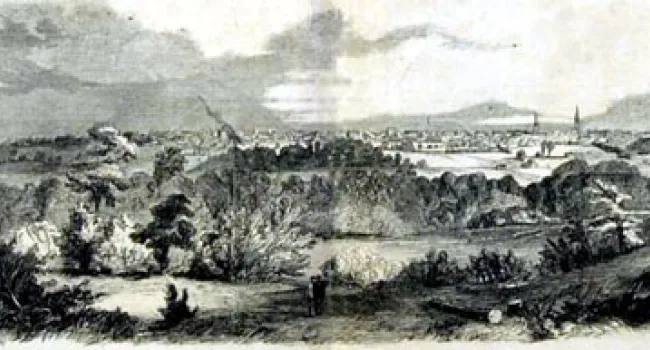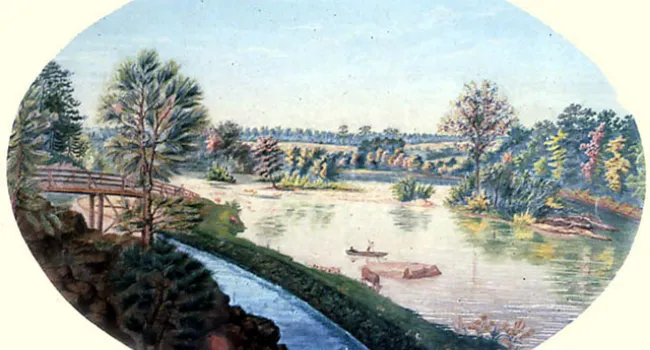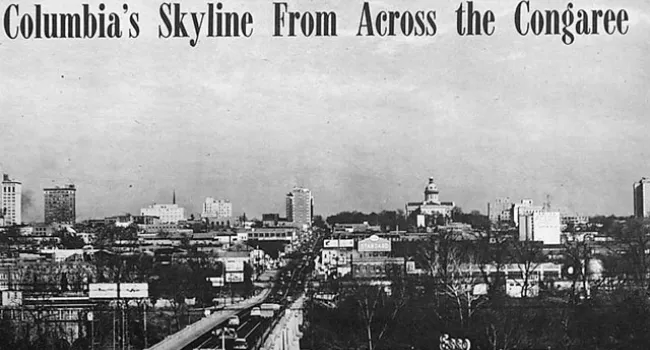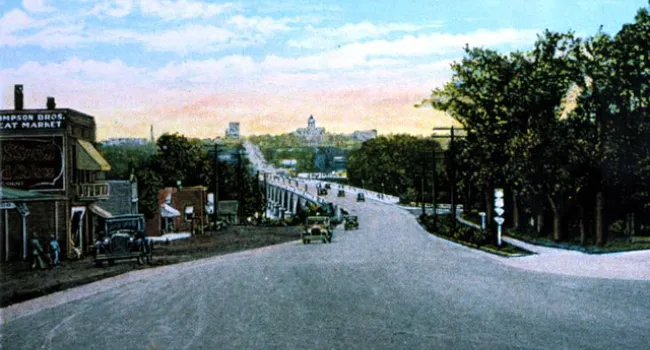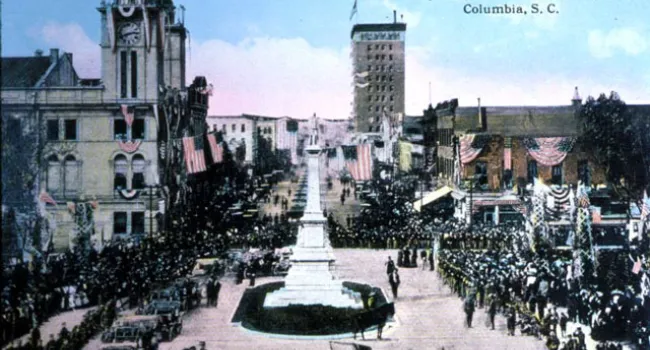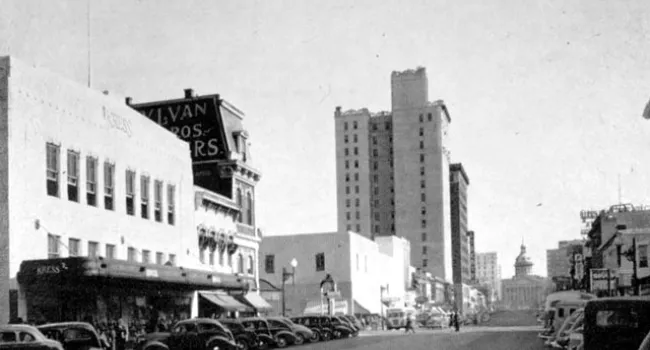
Map of Taylor's Farm, or the original survey plat of Columbia. Before the Revolution, the newly established settlements in the Upcountry of South Carolina did not have much voice in the government of the colony. With the close of the war, the new state constitution gave all of the people a more equal share in governing (see The Constitution Of 1776). At the same time, the idea of locating the capitol in a more central location than Charleston rapidly gained favor. In 1785, the General Assembly voted to investigate moving the capitol to the center of the state. The recommendation of Camden was rejected, but a year later John Lewis Gervais introduced a bill to lay off 650 acres of land (later changed by the Assembly to two square miles) near Friday's Ferry on the Congaree River, on the plain of the hill where James and Thomas Taylor resided (see Thomas Taylor). After two weeks of debate, on March 22, 1786, the Act "to appoint commissioners to purchase Land for the purpose of Building a Town, and for removing the Seat of Government thereto" was ratified. This Act named the town Columbia, after Christopher Columbus. A square of eight acres was reserved for government buildings. Two principal streets 150 feet wide were to run through the center of the town at right angles. The plat you see was probably drawn on the 21st of April when the newly elected commissioners met on Taylor's Hill to survey the property and lay out the streets. The two mile square was divided each way into ten streets, forming a total of forty square blocks. In the very center you can see the area reserved for the necessary public buildings. The north-south streets ran parallel to one principal avenue named Assembly Street and were named for officers who had served in the Revolution. The streets running east and west ran parallel to Senate Street, the other principal street. Those streets to the south of Senate were named for various state products like Rice, Indigo, Wheat and Blossom, for the recently introduced crop, cotton. Those to the north of Senate received names of prominent personages, such as Gervais, Taylor, and Lady, for Martha Washington. Sale of lots and construction of buildings began in September of 1786. It took more than three years to build enough facilities for the legislators and government officers. The General Assembly officially moved and convened in the new capital on January 4, 1790.
Courtesy of the South Carolina Department of Archives and History.
